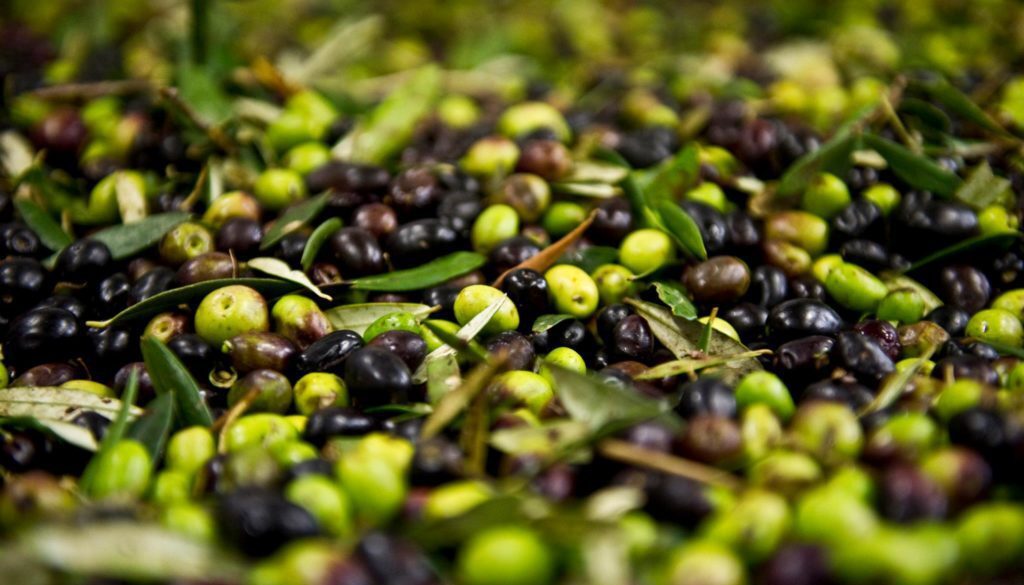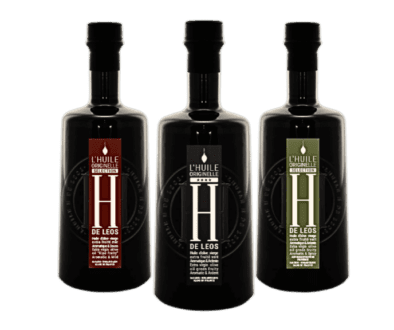Olive oil “1cold press era” : scam or guarantee of quality ?
We all have in mind advertising images that take place in a Provençal village square with the sounds of cicadas, the petanque game and the famous olive oil “First cold pressing” said with a southern accent. But this “1cold press era” is it a guarantee of quality or a reassurance marketing device ?
Where does this term come from? – 1cold press era ?
Historically, in Provence, the olive trees served as tutors for the vines and the olives were of little importance. We harvested them to make a little oil but it was not yet a product recognized for its virtues and its taste qualities..
In the 18th century, Provence has developed the culture of the olive tree and has moved towards a real production of olive oil from Provence. This one was not always intended for the kitchen, or at least very little. We will see what it was used for.
Ancestral olive oil extraction method

To extract the oil, the olives were crushed using a stone grinder. The pulp obtained was put in scroutins (stacked flexible baskets), then pressed to extract the oil. The mills made a first cold pressing. This pressure made it possible to harvest approximately 40% fruit oil.
In order to get even more oil, the millers scalded the olive pomace several times to extract the remaining oil… This oil from “hot pressing” was of low quality taste because it lost all its flavors under the heat. This oil of “hot pressing” was only intended for the manufacture of Marseille soap !

Conclusion, if you buy a artisan olive oil, it will MANDATORY come from a first cold pressing. Nobody will sell you an oil intended for soap factories ! The mention the reference “1cold press era” is therefore a real argument but purely marketing.
“cold extraction”
Today, many mills have been modernized and use mechanical extraction (centrifuge). Here again, to preserve the flavors of olive oil, l’AOC Provence foresees a maximum extraction temperature of 27°c.
What to look for to be sure to buy a good olive oil ?
- The origin of the olives : does the oil have an AOC, AOP or IGP ?
- Is the oil classified “extra virgin” ? Which means it has less 0.8% oleic acid (for information the maximum is 2% for oils “virgins”. Knowing that beyond, the oil will only be used for oil lamps because it is not suitable for consumption).
- The olives used. Some producers mention on the back label the varieties of olives that compose it.
- The medals. Attention ! This absolutely does not mean that an oil that does not have a medal is not good. ! Those who do not have a medal simply choose not to participate in competitions. On the other hand, the oils that have one are in principle a guarantee of quality.
- Container ! Large retailers favor transparent and large-volume bottles (1 litre), so that you can clearly differentiate the beautiful oil “verte” d’olive, peanut oils, sunflower, etc… Or, olive oil is a fragile product that oxidizes on contact with light and air. A traditional oil producer will choose an opaque bottle, noire, or even a 25cl to 75cl metal container to protect it.
- The price. An oil made according to the rules of the art in France cannot be sold at 5€ per half liter. To reach that price, the olives come “from the Mediterranean basin”, i.e. Morocco, Tunisia, Spain, Greece, Turkey… far from the Provençal village square with the cicadas singing. We forget ecology and we enter excessive industrialization. Hence the acidity, the sourness and lack of flavor of these products. As a reminder, the determining factor for the taste quality of the oil is the time between picking and extraction. Olive oil, more than any other product, requires a short circuit.
Now that you know how to choose your olive oil, some last tips !
- Keep your oil away from air and light, prefer 50cl bottles (or 75 for large families).
- Try not to keep more than 6 month your olive oil. If the bottle is open, l’olive oil will gradually lose its flavors and benefits on contact with air.
- Think of Oil as Wine. The flavors from one oil to another are really different and your dishes can be all the tastier depending on your choices.. a tomato, oil and a pinch of fleur de sel are enough if your oil is of good quality.
- Avoid oils “flavored”. Add a branch of thyme, cherries or grapefruit in a bottle of wine ?
If you are a lover of cuisine and authentic flavors, you can find our selection of olive oils from Provence on the shop. We enrich it week by week : The olive oil shop
Infographics

Current 1st cold pressing olive oils
On the same theme
Feel free to leave us a comment below., your favorites, your mill visits, your favorite oils, your recipes.



